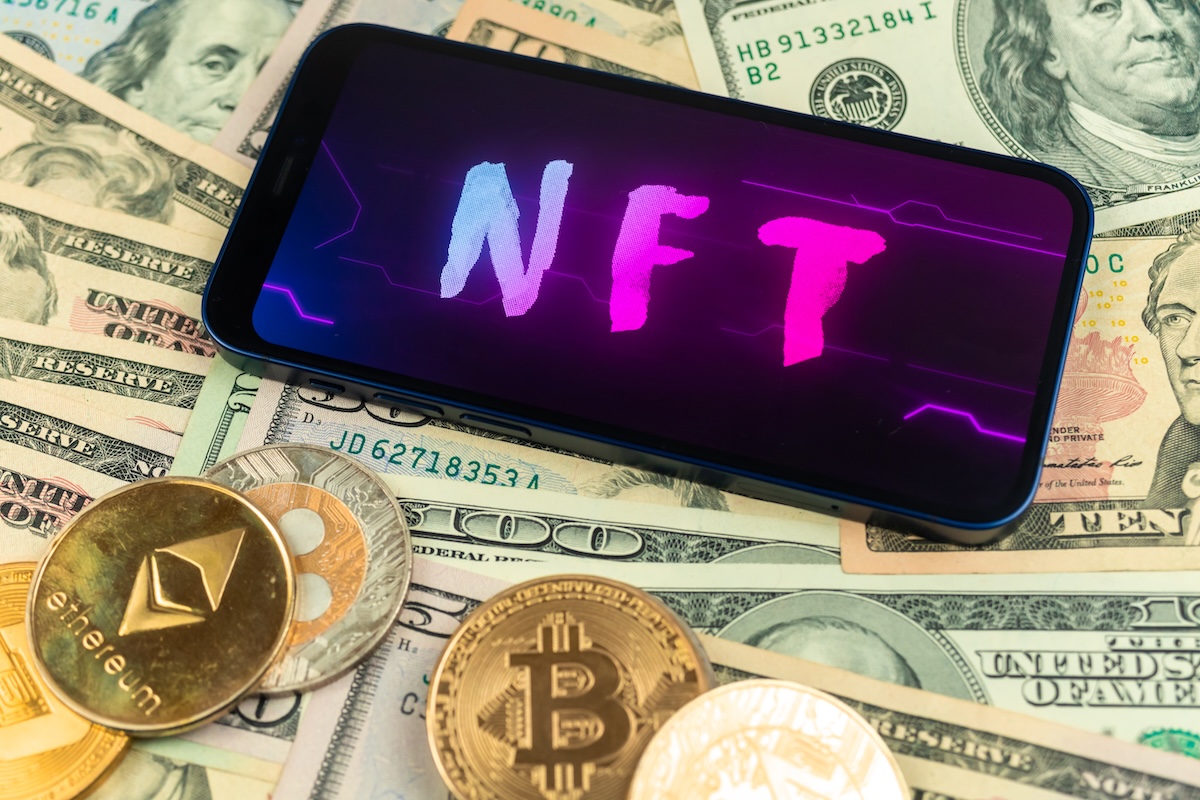What I Wish I Knew Before Investing in NFTs
Things I Wish I'd Known Before Investing in NFTs: Risks, Research Tips, Market Volatility, and How to Avoid Common Mistakes New Buyers Often Make.

Blockchain collectibles looked like an instant wealth machine in 2021, yet four years later I’m still suffering from gas fee scars, Discord dramas, and ledgers full of lessons. The reflections below explain what actually matters and what painfully doesn’t so newcomers and veterans alike can avoid repeating my most expensive mistakes.
Key Takeaways
Hype peaks hide thin liquidity and brutal drawdowns; volume is down 98 % since January 2022.
Gas, platform cuts, and failed mints routinely add 30‑200 % on top of a “sticker price.”
Hardware wallets and revoked approvals save more ETH than lucky flips ever will.
Stories, provenance, and genuine communities preserve value long after price charts fade red.
Winning in NFTs feels less like day‑trading and more like slow, conviction‑driven collecting.
The Hype vs. Reality
I minted my first JPEG the week after Beeple’s $69 million sale. Twitter feeds screamed that every drop was “life‑changing.” Reality checked me quickly. Monthly volume on OpenSea has slipped from a $5 billion frenzy in January 2022 to about $81 million in May 2025. That 98 % plunge means today’s buyer faces tighter spreads, fewer bidders, and projects competing for slivers of attention.
One haunting reminder is Pixelmon. In February 2022 the team pulled in $70 million promising a “AAA blockchain game.” Reveal day showed crude Pokémon knock‑offs; floors imploded by 60 % faster than I could list mine. The episode taught me that glossy trailers don’t equal product progress and that liquidity disappears the moment euphoria fades.
Lesson: Treat parabolic charts as fireworks pretty, loud, and gone in seconds.
Hidden Costs and Fees
My first mint cost 0.08 ETH. The transaction actually drained 0.27 ETH because gas fees spiked mid‑block, OpenSea’s commission clipped 2.5 %, and the transfer to cold storage added another fee. Worse, a failed attempt the same hour burned gas even though it reverted.
High‑profile examples dwarf my incident. Yuga Labs’ Otherside land sale torched over $176 million in gas within three hours, with some buyers paying 5 ETH per transaction. Around 1,600 ETH also vaporized through failed mints that night.
Today, I anticipate a surcharge on the Ethereum mainnet; expect to spend up to twice the advertised price during congested periods. Alternatives like Polygon or Tezos help, but blue‑chip projects still cling to mainnet prestige. Timing mints for off‑peak hours, pre‑signing limit orders, and topping wallets with extra ETH have saved me from forced liquidations.
Due Diligence and Research
Rug pulls wore many disguises in 2022. Frosties vanished with $1.3 million; Pixel Pets impersonated Bored Ape adjacent brands; even fake ApeCoin airdrops lured veterans. My early approach skimming Discord and chasing influencer tweets proved reckless.
Now I follow a checklist:
Smart‑contract review: I can’t audit code like a Solidity dev, but I read scam‑check threads and pay for a quick CertiK or Hacken summary when stakes are high.
Team verification: LinkedIn pages and past GitHub repos show whether founders shipped before. Pseudonyms are fine; zero track record isn’t.
Holder distribution: Nansen dashboards reveal if ten wallets own half the supply—usually a sign of future price manipulation.
Volume quality: Dune charts expose wash trading. Genuine interest shows steady unique buyers, not the same wallets ping‑ponging tokens.
Spending an hour here has spared me months of grief later.
Understanding Wallets and Security
February 2022 hardened my security posture. A phishing signature on OpenSea drained 254 high‑value NFTs from 32 users in minutes; Ledger’s Connect kit hack two years later reinforced that hardware alone isn’t a silver bullet. I escaped both events by pure luck, but friends didn’t.
Current routine:
Separate wallets for minting, holding, and trading; the hot wallet never holds grails.
Revoke permissions weekly via Revoke.cash; unlimited approvals are silent assassins.
Bookmark official links; I type them manually rather than trusting Discord pop‑ups.
Treat unsolicited airdrops as malware; I hide them, never interact.
Security feels boring until a supposed “free mint” costs a CryptoPunk.
What Makes an NFT Valuable
Early 2021 me believed rarity traits alone pumped floors. Experience flipped that notion. Value comes from overlapping factors:
Provenance & scarcity: On‑chain generative art like Chromie Squiggles embodies code as art. Supply stayed fixed at 10,000, and floors climbed from 6 ETH to about 17 ETH within six months because collectors trust Art Blocks’ curation and chain permanence.
Cultural relevance: Beeple’s Everydays collage condensed 13 years of daily output; it held meaning beyond token ID #.
Brand extensions: Pudgy Penguins entered Walmart with plush toys and sledded past bear‑market blues. Physical reach widened mindshare and drove new collectors back to NFTs.
A static image seldom justifies price. Storytelling, IP execution, and the sense you’re owning a cultural artifact carry much heavier weight.
Emotional Investing
Charts trigger dopamine. More than 80 % of U.S. crypto holders admit FOMO‑buying; I’m part of that statistic. In 2022 I panic‑bought a Cool Cat at 11 ETH because Twitter said “game launch next week.” Two months later the CEO left, Cooltopia stalled, and my Cat hovers near 1 ETH today.
To curb impulses, I pre‑define a quarterly NFT budget. Any purchase above 0.5 ETH waits 24 hours. I also log reasons before buying; if “looks cool” or “friend pumped it” top the list, I pass. Data reveals that tempering excitement beats “gut feeling” nine times out of ten.
Art Appreciation vs. Speculation
Traditional art collectors visit galleries and discuss brushwork. NFT flippers watch floor bots. Straddling those cultures proved tricky. My rarest gain came from appreciating art, not chasing yield: a QQL mint pass by Tyler Hobbs and Dandelion Wist. I loved Hobbs’ generative aesthetic, held through a 50 % drawdown, and eventually sold one output for 15 ETH. Meanwhile, a short‑lived meme collection I “aped” collapsed to zero.
Takeaway: Buy pieces you’d display even if price hits rock bottom. Genuine enthusiasm sustains patience during liquidity droughts.
Community Matters
Silent Discords signal trouble. Doodles, once a darling, sparked a revolt when founders declared they were “building a media company” and told complainers to “floor it and GTFO.” Floor slid 25 % within days, and chat channels resembled tumbleweeds.
Pudgy Penguins offered the opposite blueprint. Holder‐generated GIFs amassed 28.9 billion views, founder Luca Netz shares toy royalties with licensees, and AMAs feel open rather than choreographed. I spent hours in their “Huddle,” sensed organic energy, and bought a Penguin at 3 ETH. That decision aged well even through market carnage.
Gauge community health by:
Founder presence in voice chats.
Constructive criticism tolerated, not banned.
Real‑world partnerships that bring non‑crypto eyeballs.
Projects without pulse rarely resurrect.
Utility and Roadmaps Can Be Misleading
Whitepapers promise moons; treasuries fund disappointment. Cool Cats teased a play‑to‑earn empire, then shelved it. Doodles hyped Pharrell Williams partnerships, pivoted away from NFTs, and left holders puzzled. Pixelmon’s “open‑world game” morphed into a meme.
I now consider roadmaps to be marketing slides rather than binding contracts. Teams that deliver quietly, like RektGuy shipping merch and Art Blocks refining curation, earn my ETH. Actions speak louder than pastel gradient timelines.
Patience and the Long Game
Bear markets buffet weak hands. OpenSea’s active user count, however, sits near a three‑year high despite slashed dollar volumes, hinting at a core collector base still building. Generative art keeps attracting museums; real‑world‑asset NFTs tokenize property deeds and concert tickets.
My horizon shifted from weeks to half a decade. I’d rather compound social capital inside a resilient community than chase the next 10 x flip. Setting low time preference transforms volatility from stressor to opportunity.
Final Thoughts
NFTs didn’t break me; my preconceived notions did. Hype persuaded me that everyone wins, fees were trivial, and security was plug‑and‑play. Hard experience rewrote those beliefs. Careful research, wallet hygiene, affinity for the art, and a patient outlook now govern every purchase. If you enter with similar guardrails, NFTs can still offer meaningful, if risky, ownership experiences. Skip them, and you’ll learn the same lessons the pricey way just like I did.
Frequently Asked Questions
Here are some frequently asked questions about this topic:
Why did NFT trading volume crash after 2021?
The 2021 boom mixed cheap money, celebrity hype, and blurry expectations. As macro liquidity tightened and many projects failed to ship, buyers vanished, cutting monthly OpenSea volume by about 98 %.
How much extra should I budget for gas and fees?
On Ethereum mainnet I now assume the real cost lands 30‑200 % above the list price. Gas spikes, platform cuts, and the risk of failed mints all add up fast.
Are hardware wallets still safe after the Ledger‑connect hack?
Yes—if you pair them with strict habits. Keep high‑value NFTs in a vault wallet, revoke old approvals weekly, and never sign blind signatures popped up by a browser.
What signals a potential “rug pull”?
Anonymous founders with no past builds, lopsided whale wallets, and volume that looks like wash trades top my danger list. If the Discord bans basic questions, I walk away.
Do roadmaps matter at all?
They’re marketing slides, not contracts. I focus on teams that deliver small updates on schedule; silence after a fund‑raise usually predicts trouble.
How do I pick NFTs that might hold value?
I look for clear provenance, cultural weight, and real IP growth. Chromie Squiggles, Beeple pieces, and Pudgy Penguins toys each tick those boxes.
What’s the best way to control FOMO?
I set a hard quarterly NFT allowance and force a 24‑hour cooling period on buys above 0.5 ETH. Logging my purchase reasons in plain text also exposes wishful thinking.
Should I chase utility tokens or pure art?
I buy art I’d gladly display even at zero price, then layer in utility plays I understand. Empty utility promises age poorly, while genuine artistry ages well.
How big a role does community play in price stability?
A huge one. Active, respectful Discords with founder presence and off‑chain collaborations cushion floors when wider markets sag. Dead chats precede deep slides.
What time horizon makes sense for an NFT portfolio?
I think in three‑to‑five‑year cycles. Projects building through the bear phase can shine later, but that patience only works if the art or story already speaks to me.
Can free mints be safe?
Sometimes, but I treat any unsolicited drop as malware. I hide unknown tokens and interact only after I’ve vetted the smart contract link.
Bottom line—are NFTs still worth it?
Yes, if you treat them as high‑risk collectibles, secure them properly, and buy pieces you believe in. Enter for fast flips and you’re likely paying for someone else’s exit.




